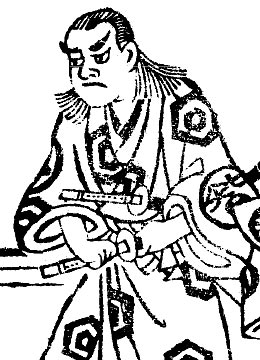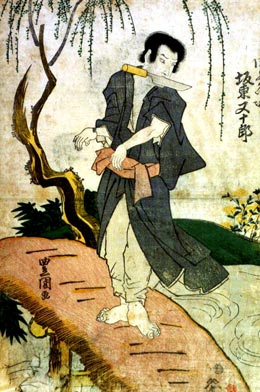| BANDÔ MATAJŰRÔ |
| THREE GENERATIONS | |
| Bandô Matajűrô I | |
|
The actor Bandô Matajűrô I held this name from the 11th lunar month of 1705 to the middle of the 1730s. |
|
 |
|
|
Bandô Matajűrô I performing in the kaomise drama "Genji Moyô Ichimai Gushi", which was staged in the 11th lunar month of 1722 at the Ônishi no Shibai |
|
| Bandô Matajűrô II | |
|
The actor Ôtani Hirohachi II held the name of Bandô Matajűrô II before 1783. |
|
| Bandô Matajűrô III | |
|
The actor Nakamura Jűzô V held the name of Bandô Matajűrô III from the 11th lunar month of 1816 to the 10th lunar month of 1819. |
|
 |
|
|
Bandô Matajűrô III playing the role of Hokaibô in the drama "Furisode Sumidagawa", which was staged in the 7th lunar month of 1819 at the Kawarasakiza (print made by Utagawa Toyokuni I) |
|
|
|
| Contact | Main | Top | Updates | Actors | Plays | Playwrights | Programs | Links | FAQ | Glossary | Chronology | Illustrations | Prints | Characters | Derivatives | Theaters | Coming soon | News |